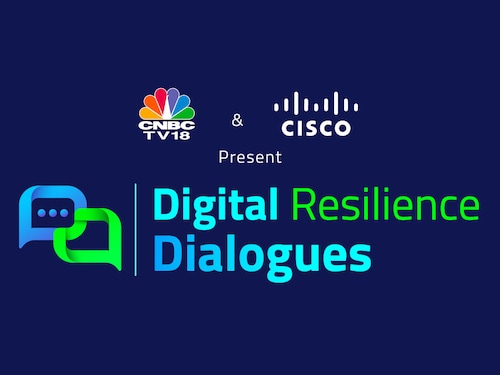Building trust at scale from universities to global networks
Resilience is more than just protecting against risks; it has become a driving force for growth and innovation


Digital resilience has become the foundation of modern life. It is what keeps a campus lecture running without interruption, a hospital connected to its patients, or a payment moving securely through an app. In a hyperconnected economy, resilience is no longer a background function. It is a design principle that ensures systems can withstand disruption, recover quickly, and inspire trust. This vision shapes CNBC-TV18, and Cisco presents Digital Resilience Dialogues, a series that brings together leaders across sectors to imagine enterprises that are secure, agile, and built for the future.
Few environments highlight the importance of resilience more clearly than universities. At IIT Delhi, resilience is a key part of all aspects of academic life. Classrooms, research labs, and hostels rely on unseen networks that keep students' and faculty's connections to knowledge and collaborators worldwide alive. A disruption no longer just causes technical problems; it can lead to exam delays, data breaches, or interruptions to vital research.
Preparing for the AI era introduces an additional challenge. Data centers are being redesigned to support new tasks, such as training models and performing real-time analytics. Professors are teaching remotely, students connect from around the globe, and devices are multiplying rapidly. Institutions like IIT Delhi are updating their curricula to ready students for an AI-driven future, stressing that technology should serve as a tool rather than replace critical thinking. True resilience isn't just about uptime but also about enabling people to think critically, adapt, and use technology responsibly.
Connectivity exemplifies resilience in design just as education exemplifies it in practice. Today, every financial transaction, healthcare appointment, and logistics operation relies on networks that do more than just withstand shocks. They predict potential disruptions, manage volatility, and expand effortlessly with demand. Lightstorm has become one of India’s pioneering cloud-native network companies, replacing outdated infrastructure with adaptable, software-defined fabrics tailored for an AI-driven economy.
Cisco complements this with a vision that sees connectivity and security as inseparable. Resilience is no longer about putting firewalls at the edges but about weaving protection into every layer. Intelligence monitors and adapts in real time, ensuring that continuity is never in doubt.
What unites these stories is the understanding that resilience cannot be built in isolation. At IIT Delhi, IT teams, faculty, and administrators must work together smoothly to keep academic life running without interruption. At Lightstorm, creating networks that span continents requires cooperation across cooling systems, fiber infrastructure, automation, and security. Cisco’s partnerships show how resilience develops when different layers of technology function as a whole.
Automation turns the vision of resilience into reality. At Lightstorm, optical connectivity can be set up as easily as placing an order through an app, but behind this simple interface is a complex system. Fiber, routing, and robotic automation collaborate seamlessly to enable instant scaling of the network while ensuring reliability.
Resilience is more than just protecting against risks; it has become a driving force for growth and innovation. In universities, it ensures that students can learn without interruptions and research runs smoothly. In the digital economy, it builds trust in every transaction and connection.
India’s immense scale makes this vision particularly powerful. Through Aadhaar, UPI, and sovereign cloud initiatives, the country shows how ambition combined with careful planning can develop platforms that are both inclusive and resilient. Companies like Cisco and Lightstorm are using this approach for enterprise infrastructure and global connectivity, demonstrating that resilience can be both subtle and vital.
A future-ready enterprise or campus doesn't openly display its resilience. Instead, it operates smoothly and confidently, keeping the focus on learning, discovery, and growth. When resilience functions effectively, it becomes invisible, promoting continuity, trust, and the ability to envision future possibilities.
The pages slugged ‘Brand Connect’ are equivalent to advertisements and are not written and produced by Forbes India journalists.
First Published: Oct 09, 2025, 17:02
Subscribe Now